2014 HONORED WARRIORS
Medal of Honor Recipient - Army SFC Leroy Petry
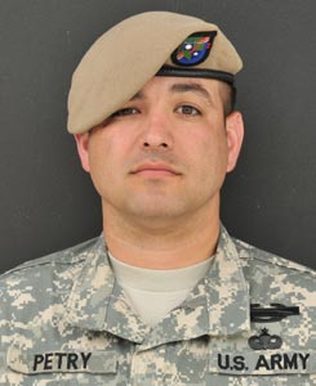
Sgt. 1st Class Leroy Arthur Petry is currently assigned to Headquarters and Headquarters Company, 75th Ranger Regiment at Fort Benning, Ga. with duties as a liaison officer for the United States Special Operations Command Care Coalition—Northwest Region, providing oversight to wounded warriors, ill and injured service members and their families.
He was born in 1979 in New Mexico and in September 1999, Petry enlisted in the United States Army from his hometown in New Mexico, something he wanted to do since he was 7-years-old. Petry then volunteered for the 75th Ranger Regiment because of its reputable history.
After completion of One Station Unit Training, the Basic Airborne Course and the Ranger Assessment and Selection Program – all at Fort Benning – Petry was assigned to 2nd Battalion, 75th Ranger Regiment. He served as a grenadier, squad automatic rifleman, fire team leader, squad leader, operations sergeant and a weapons squad leader.
He has deployed eight times in support of overseas contingency operations with two tours to Iraq and six tours to Afghanistan.
At the time of the May 26, 2008 combat engagement, Petry was a Staff Sergeant Squad Leader assigned to Co. D, 2nd Bn., 75th Ranger Regiment at Joint Base Lewis-McChord, Wash.
Petry plans to retire from the Army after many more years of service. Petry enjoys serving in the Army, and has a great opportunity to work with the care coalition; in his words, "If I can’t go to the fight, I can help the men who are wounded, injured or ill."
SFC Leroy Petry was awarded the Medal of Honor for conspicuous gallantry and intrepidity at the risk of his life above and beyond the call of duty
He was born in 1979 in New Mexico and in September 1999, Petry enlisted in the United States Army from his hometown in New Mexico, something he wanted to do since he was 7-years-old. Petry then volunteered for the 75th Ranger Regiment because of its reputable history.
After completion of One Station Unit Training, the Basic Airborne Course and the Ranger Assessment and Selection Program – all at Fort Benning – Petry was assigned to 2nd Battalion, 75th Ranger Regiment. He served as a grenadier, squad automatic rifleman, fire team leader, squad leader, operations sergeant and a weapons squad leader.
He has deployed eight times in support of overseas contingency operations with two tours to Iraq and six tours to Afghanistan.
At the time of the May 26, 2008 combat engagement, Petry was a Staff Sergeant Squad Leader assigned to Co. D, 2nd Bn., 75th Ranger Regiment at Joint Base Lewis-McChord, Wash.
Petry plans to retire from the Army after many more years of service. Petry enjoys serving in the Army, and has a great opportunity to work with the care coalition; in his words, "If I can’t go to the fight, I can help the men who are wounded, injured or ill."
SFC Leroy Petry was awarded the Medal of Honor for conspicuous gallantry and intrepidity at the risk of his life above and beyond the call of duty
USMC SSgt John Jones
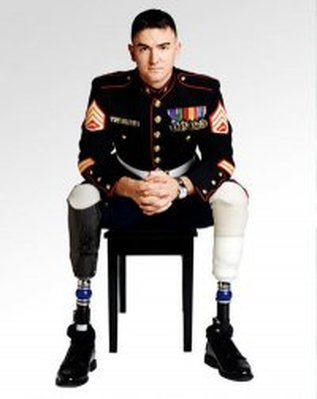
Staff Sergeant John P. Jones was born March 12, 1977 and was raised in Enid, OK. He joined the United States Marine Corps in July 1995, and underwent recruit training at MCRD San Diego. He completed recruit training and was assigned to SOI west at Camp Pendleton, CA where he was assigned the MOS of 0331 Machine Gunner. After completion of his MOS School, he was assigned to 2nd Battalion, 7th Marines, Company “G” Weapons Platoon, where he was deployed to Okinawa, Japan in 1996. Upon completion of his tour with 2/7, he then transferred to 1st Battalion, 7th Marines, Company “C” in 1997 where he deployed again to Okinawa, Japan in 1999 and held security for the G-8 Summit and participated in Cobra Gold 2000. He then transferred to Marine Corps Security Forces Training Company where he was a Cadre Instructor and Non-Lethal Weapons Instructor.
In 2002, Staff Sergeant Jones was transferred to Bahrain where he participated in Operations Southern Watch and Operation Iraqi Freedom 1. He then transferred to 1st Battalion, 7th Marines, Company “C” again and deployed to Operation Iraqi Freedom 2 in August 2004. During his deployment, SSgt Jones was severely injured when his hummer ran over a double-stacked anti-tank mine. SSgt Jones underwent 30 surgeries at NNMC Bethesda, MD attempting to save his legs. As a result of his injuries, SSgt Jones lost both legs below the knees.
SSgt Jones transferred down to BAMC San Antonio, TX where he rehabilitated his legs and gradually began the process of walking again with prosthesis. In 2005, he joined 4th Reconnaissance Battalion where he was assigned as the Operations and Training SNCOIC. SSgt Jones medically retired from the USMC in 2007, putting in a total of 12 years of service to his country. Shortly after retirement, SSgt Jones began training fellow wounded servicemen and women with the F.A.T.S. System (Fire Arms Training Simulator). He devoted his time and effort to help retrain service-members how to shoot their weapons effectively with their new disabilities. SSgt Jones had a 100% success rate to include graduation of various amputees, burn victims, and blind patients.
SSgt Jones was the Executive Director of Wall Street Warfighters Foundation. Wall Street Warfighters Foundation helps disabled veterans from Iraq and Afghanistan find jobs in the financial industry. During his time at WWSF he developed the training programs for the participants. He was an intricate part of the development of the job hiring processes with various banks and financial institutions
SSgt Jones is working for the Marine Corps Scholarship Foundation, as a development officer and special projects. MCSF provides scholarships to the children of Marines and Navy personnel that have been killed in action, wounded in action, and for those that have served the US Marines and Navy Corpsmen whom are attached to the Marines.
SSgt Jones’ personal decorations include: Purple Heart, Navy Commendation with combat V, Navy and Marine Corps Achievement Medal with Gold Star, Combat Action Ribbon, and three Good Conduct Medals.
In 2002, Staff Sergeant Jones was transferred to Bahrain where he participated in Operations Southern Watch and Operation Iraqi Freedom 1. He then transferred to 1st Battalion, 7th Marines, Company “C” again and deployed to Operation Iraqi Freedom 2 in August 2004. During his deployment, SSgt Jones was severely injured when his hummer ran over a double-stacked anti-tank mine. SSgt Jones underwent 30 surgeries at NNMC Bethesda, MD attempting to save his legs. As a result of his injuries, SSgt Jones lost both legs below the knees.
SSgt Jones transferred down to BAMC San Antonio, TX where he rehabilitated his legs and gradually began the process of walking again with prosthesis. In 2005, he joined 4th Reconnaissance Battalion where he was assigned as the Operations and Training SNCOIC. SSgt Jones medically retired from the USMC in 2007, putting in a total of 12 years of service to his country. Shortly after retirement, SSgt Jones began training fellow wounded servicemen and women with the F.A.T.S. System (Fire Arms Training Simulator). He devoted his time and effort to help retrain service-members how to shoot their weapons effectively with their new disabilities. SSgt Jones had a 100% success rate to include graduation of various amputees, burn victims, and blind patients.
SSgt Jones was the Executive Director of Wall Street Warfighters Foundation. Wall Street Warfighters Foundation helps disabled veterans from Iraq and Afghanistan find jobs in the financial industry. During his time at WWSF he developed the training programs for the participants. He was an intricate part of the development of the job hiring processes with various banks and financial institutions
SSgt Jones is working for the Marine Corps Scholarship Foundation, as a development officer and special projects. MCSF provides scholarships to the children of Marines and Navy personnel that have been killed in action, wounded in action, and for those that have served the US Marines and Navy Corpsmen whom are attached to the Marines.
SSgt Jones’ personal decorations include: Purple Heart, Navy Commendation with combat V, Navy and Marine Corps Achievement Medal with Gold Star, Combat Action Ribbon, and three Good Conduct Medals.
USMC LT - Clebe McClary
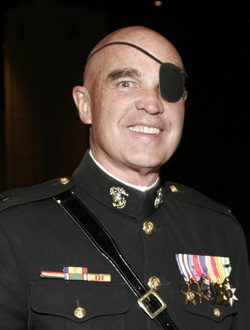
Patrick Cleburne "Clebe" McClary was raised on a 10,000 acre plantation in the South Carolina Low Country. Young Clebe grew up hunting, fishing and excelling at sports. After fulfilling his dream of becoming a college coach, Clebe had plans to marry a beautiful Southern belle. Life was very good. But only weeks before the wedding (March 26, 1967), Clebe witnessed a startling event on a college campus that changed the course of his life forever - the burning of an American flag by students protesting the Vietnam conflict.
Dismayed by the lack of support for the country he loved, Clebe resigned from his coaching position and volunteered for duty in the Marine Corps.
Completing Officers Training School in Quantico, Virginia, First Lt. McClary said goodbye to his bride and became platoon leader of the 1st Recon Battalion in Vietnam. On his 19th recon patrol, deep in hostile territory, Clebe and his unit engaged in hand-to-hand combat with the enemy. Suffering devastating injuries, which included the loss of his left arm and left eye, Clebe continued to lead his men.
Clebe's valiant battle with the pain and disabilities that followed is nothing short of amazing. He spent over two years in military hospitals, undergoing over 30 major surgeries and countless hours of physical therapy. Since then Clebe has used his powerful story of courage, determination and strength to motivate audiences the world over.
Dismayed by the lack of support for the country he loved, Clebe resigned from his coaching position and volunteered for duty in the Marine Corps.
Completing Officers Training School in Quantico, Virginia, First Lt. McClary said goodbye to his bride and became platoon leader of the 1st Recon Battalion in Vietnam. On his 19th recon patrol, deep in hostile territory, Clebe and his unit engaged in hand-to-hand combat with the enemy. Suffering devastating injuries, which included the loss of his left arm and left eye, Clebe continued to lead his men.
Clebe's valiant battle with the pain and disabilities that followed is nothing short of amazing. He spent over two years in military hospitals, undergoing over 30 major surgeries and countless hours of physical therapy. Since then Clebe has used his powerful story of courage, determination and strength to motivate audiences the world over.
Army SFC, SF - Issac "Ike" Camacho
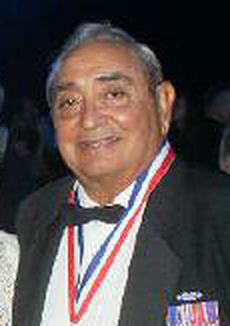
On October 29, 1963, Capt. "Rocky" Versace, 1Lt. "Nick" Rowe, and Sgt. Daniel Pitzer were accompanying a CIDG company on an operation along a canal. The team left the camp at Tan Phu for the village of Le Coeur to roust a small enemy unit that was establishing a command post there. When they reached the village, they found the enemy gone, and pursued them, falling into an ambush at about 1000 hours. The fighting continued until 1800 hours, when reinforcements were sent in to relieve the company. During the fight, Versace, Pitzer and Rowe were all captured. The three captives were photographed together in a staged setting in the U Minh forest in their early days of captivity.
The camp at Hiep Hoa was located in the Plain of Reeds between Saigon and the Cambodian border. In late October 1963, several Viet Cong surrendered at the camp, claiming they wished to defect. Nearly a month later, on November 24, Hiep Hoa was overrun by an estimated 400-500 Viet Cong just after midnight. Viet Cong sympathizers in the camp had killed the guards and manned a machine gun position at the beginning of the attack. The Viet Cong climbed the camp walls and shouted in Vietnamese, "Don't shoot! All we want is the Americans and the weapons!" Lt. John Colbe, the executive officer, evaded capture. Capt. Doug Horne, the Detachment commander, had left earlier with a 36 man Special Forces/CIDG force. The Viet Cong captured four of the Americans there. It was the first Special Forces camp to be overrun in the Vietnam War.
Those captured at Hiep Hoa were SFC Issac "Ike" Camacho, SFC Kenneth M. Roraback (the radio operator), Sgt. George E. "Smitty" Smith and SP5 Claude D. McClure. Their early days of captivity were spent in the Plain of Reeds, southwest of Hiep Hoa, and they were later held in the U Minh forest.
"Ike" Camacho continually looked for a way to escape. In July 1965, he was successful. His and Smith's chains had been removed for use on two new American prisoners, and in the cover of a violent night storm, Camacho escaped and made his way to the village of Minh Thanh. He was the first American serviceman to escape from the Viet Cong in the Second Indochina War. McClure and Smith were released from Cambodia in November 1965.
Rocky Versace had been torn between the Army and the priesthood. When he won an appointment to West Point, he decided God wanted him to be a soldier. He was to enter Maryknoll (an order of Missionaries), as a candidate for the priesthood, when he left Vietnam. It was evident from the beginning that Versace, who spoke fluent French and Vietnamese, was going to be a problem for the Viet Cong. Although Versace was known to love the Vietnamese people, he could not accept the Viet Cong philosophy of revolution, and spent long hours assailing their viewpoints. His captors eventually isolated him to attempt to break him.
Rowe and Pitzer saw Rocky at interludes during their first months of captivity, and saw that he had not broken. Indeed, although he became very thin, he still attempted to escape. By January 1965, Versace's steel-grey hair had turned completely white. He was an inspiration to them both. Rowe wrote:
..The Alien force, applied with hate, could not break him, failed to bend him; Though solitary imprisonment gave him no friends, he drew upon his inner self to create a force so strong that those who sought to destroy his will, met an army his to command..
On Sunday, September 26, 1965, "Liberation Radio" announced the execution of Rocky Versace and Kenneth Roraback in retaliation for the deaths of 3 terrorists in Da Nang. A later news article stated that the executions were faked, but the Army did not reopen an investigaton. In the late 1970's information regarding this "execution" became classified, and is no longer part of public record.
Sgt. Pitzer was released from Cambodia November 11, 1967.
1Lt. Nick Rowe was scheduled to be executed in late December 1968. His captors had had enough of him - his refusal to accept the communist ideology and his continued escape attempts. While away from the camp in the U Minh forest, Rowe took advantage of a sudden flight of American helicopters, struck down his guards, and ran into a clearing where the helicopters noticed him and rescued him, still clad in black prisoner pajamas. He had been promoted to Major during his five years of captivity.
Rowe remained in the Army, and shared his survival techniques in Special Forces classes. In 1987, Lt.Col. Rowe was assigned to the Philippines, where he assisted in training anti-communists. On April 21, 1989, a machine gun sniper attacked Rowe in his car, killing him instantly.
Of the seven U.S. Army Special Forces personnel captured at Hiep Hoa and Tan Phu, the fates of only Versace and Roraback remain unknown. The execution was never fully documented; it is not known with certainty that these two men died. Although the Vietnamese claim credit for their deaths, they did not return their remains. From the accounts of those who knew them, if these men were not executed, they are still fighting for their country.
====================================
Issac Camacho retired from the United States Army as a Captain. He still lives in Texas.
The camp at Hiep Hoa was located in the Plain of Reeds between Saigon and the Cambodian border. In late October 1963, several Viet Cong surrendered at the camp, claiming they wished to defect. Nearly a month later, on November 24, Hiep Hoa was overrun by an estimated 400-500 Viet Cong just after midnight. Viet Cong sympathizers in the camp had killed the guards and manned a machine gun position at the beginning of the attack. The Viet Cong climbed the camp walls and shouted in Vietnamese, "Don't shoot! All we want is the Americans and the weapons!" Lt. John Colbe, the executive officer, evaded capture. Capt. Doug Horne, the Detachment commander, had left earlier with a 36 man Special Forces/CIDG force. The Viet Cong captured four of the Americans there. It was the first Special Forces camp to be overrun in the Vietnam War.
Those captured at Hiep Hoa were SFC Issac "Ike" Camacho, SFC Kenneth M. Roraback (the radio operator), Sgt. George E. "Smitty" Smith and SP5 Claude D. McClure. Their early days of captivity were spent in the Plain of Reeds, southwest of Hiep Hoa, and they were later held in the U Minh forest.
"Ike" Camacho continually looked for a way to escape. In July 1965, he was successful. His and Smith's chains had been removed for use on two new American prisoners, and in the cover of a violent night storm, Camacho escaped and made his way to the village of Minh Thanh. He was the first American serviceman to escape from the Viet Cong in the Second Indochina War. McClure and Smith were released from Cambodia in November 1965.
Rocky Versace had been torn between the Army and the priesthood. When he won an appointment to West Point, he decided God wanted him to be a soldier. He was to enter Maryknoll (an order of Missionaries), as a candidate for the priesthood, when he left Vietnam. It was evident from the beginning that Versace, who spoke fluent French and Vietnamese, was going to be a problem for the Viet Cong. Although Versace was known to love the Vietnamese people, he could not accept the Viet Cong philosophy of revolution, and spent long hours assailing their viewpoints. His captors eventually isolated him to attempt to break him.
Rowe and Pitzer saw Rocky at interludes during their first months of captivity, and saw that he had not broken. Indeed, although he became very thin, he still attempted to escape. By January 1965, Versace's steel-grey hair had turned completely white. He was an inspiration to them both. Rowe wrote:
..The Alien force, applied with hate, could not break him, failed to bend him; Though solitary imprisonment gave him no friends, he drew upon his inner self to create a force so strong that those who sought to destroy his will, met an army his to command..
On Sunday, September 26, 1965, "Liberation Radio" announced the execution of Rocky Versace and Kenneth Roraback in retaliation for the deaths of 3 terrorists in Da Nang. A later news article stated that the executions were faked, but the Army did not reopen an investigaton. In the late 1970's information regarding this "execution" became classified, and is no longer part of public record.
Sgt. Pitzer was released from Cambodia November 11, 1967.
1Lt. Nick Rowe was scheduled to be executed in late December 1968. His captors had had enough of him - his refusal to accept the communist ideology and his continued escape attempts. While away from the camp in the U Minh forest, Rowe took advantage of a sudden flight of American helicopters, struck down his guards, and ran into a clearing where the helicopters noticed him and rescued him, still clad in black prisoner pajamas. He had been promoted to Major during his five years of captivity.
Rowe remained in the Army, and shared his survival techniques in Special Forces classes. In 1987, Lt.Col. Rowe was assigned to the Philippines, where he assisted in training anti-communists. On April 21, 1989, a machine gun sniper attacked Rowe in his car, killing him instantly.
Of the seven U.S. Army Special Forces personnel captured at Hiep Hoa and Tan Phu, the fates of only Versace and Roraback remain unknown. The execution was never fully documented; it is not known with certainty that these two men died. Although the Vietnamese claim credit for their deaths, they did not return their remains. From the accounts of those who knew them, if these men were not executed, they are still fighting for their country.
====================================
Issac Camacho retired from the United States Army as a Captain. He still lives in Texas.
Army Col - Timothy M. Karcher
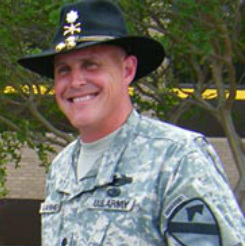
Col. Karcher has served in the Army for more than 20 years and held staff and leadership positions from platoon through corps level, deploying three times in support of Operation Iraqi Freedom (OIF). During his third deployment, in June 2009, his vehicle was struck by an explosively formed penetrator, resulting in the amputation of his legs above the knee. He has been recovering and rehabilitating at Brooke Army Medical Center. He decided to continue his service in the Army through the Continue on Active Duty program.
Karcher is a graduate of the University of Missouri – Columbia, where he earned a Bachelor of Science in Political Science. He also earned two master’s degrees from the U.S. Army Command and General Staff College. He is a graduate of the Infantry Officer Basic Course, the Armor Officer Advance Course, and the School of Advanced Military Studies.
He served in various command and staff positions and then served as a small group instructor at the Infantry Captains Career Course. He also served as a Corps Planner on the III Corps and Multi-National Corps – Iraq staffs. In almost four years of combat operations, he served as the Battalion Operations Officer, 2nd Battalion, 7th Cavalry; the Battalion Executive Officer, 1st Battalion, 12th Cavalry; and the 3rd Brigade Operations Officer.
During OIF 06-08, he also served as a Brigade Military Transition Team (MiTT) Chief. While advising an Iraqi Army Brigade, he received a gunshot wound to the left arm. He evacuated, recovered and rehabilitated, and returned to his unit to serve as the Provincial Police Transition Team Chief. He then commanded 2nd Battalion, 5th Cavalry Regiment before being severely wounded when his vehicle was struck by an explosive.
Karcher’s awards and decorations include: the Bronze Star Medal, the Purple Heart, the Meritorious Service Medal, the Joint Service Commendation Medal, the Army Commendation Medal, the Army Achievement Medal, the National Defense Service Medal, the Global War on Terrorism Service Medal, the Iraqi Campaign Medal, the Combat Infantryman’s Badge, the Expert Infantryman’s Badge, the United States Army Ranger Tab, and the Airborne Badge.
Karcher is a graduate of the University of Missouri – Columbia, where he earned a Bachelor of Science in Political Science. He also earned two master’s degrees from the U.S. Army Command and General Staff College. He is a graduate of the Infantry Officer Basic Course, the Armor Officer Advance Course, and the School of Advanced Military Studies.
He served in various command and staff positions and then served as a small group instructor at the Infantry Captains Career Course. He also served as a Corps Planner on the III Corps and Multi-National Corps – Iraq staffs. In almost four years of combat operations, he served as the Battalion Operations Officer, 2nd Battalion, 7th Cavalry; the Battalion Executive Officer, 1st Battalion, 12th Cavalry; and the 3rd Brigade Operations Officer.
During OIF 06-08, he also served as a Brigade Military Transition Team (MiTT) Chief. While advising an Iraqi Army Brigade, he received a gunshot wound to the left arm. He evacuated, recovered and rehabilitated, and returned to his unit to serve as the Provincial Police Transition Team Chief. He then commanded 2nd Battalion, 5th Cavalry Regiment before being severely wounded when his vehicle was struck by an explosive.
Karcher’s awards and decorations include: the Bronze Star Medal, the Purple Heart, the Meritorious Service Medal, the Joint Service Commendation Medal, the Army Commendation Medal, the Army Achievement Medal, the National Defense Service Medal, the Global War on Terrorism Service Medal, the Iraqi Campaign Medal, the Combat Infantryman’s Badge, the Expert Infantryman’s Badge, the United States Army Ranger Tab, and the Airborne Badge.
USMC GySgt, EOD Tech - Matt Fulling
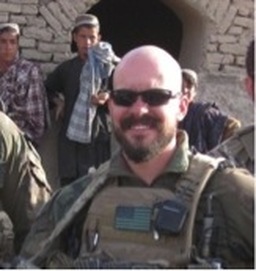
Matt Fulling was born and raised in southern Indiana. He has a twin brother and older sister.
At age 20 Matt joined the Marine Corps along with his twin brother. After initial training and MOS training Matt was stationed in Hawaii. Once Matt's first enlistment was finished, he changed job fields and became an EOD Technician. His first duty station as an EOD Tech was Okinawa Japan. Once his tour in Okinawa was complete, Matt transferred to Camp Lejeune, North Carolina.
While on his latest deployment, Matt was injured and he is currently rehabilitating at Walter Reed/ Bethesda, Maryland. Matt is married to the former Andrea Smith.
At age 20 Matt joined the Marine Corps along with his twin brother. After initial training and MOS training Matt was stationed in Hawaii. Once Matt's first enlistment was finished, he changed job fields and became an EOD Technician. His first duty station as an EOD Tech was Okinawa Japan. Once his tour in Okinawa was complete, Matt transferred to Camp Lejeune, North Carolina.
While on his latest deployment, Matt was injured and he is currently rehabilitating at Walter Reed/ Bethesda, Maryland. Matt is married to the former Andrea Smith.
USMC Ssgt, EOD Tech - James Sides
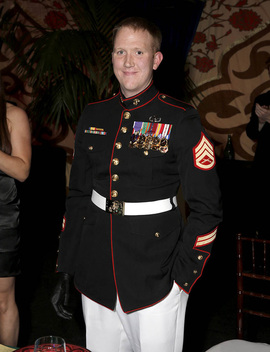
Staff Sergeant Sides was born on October 7, 1982 in Austin, Texas. He enlisted in the Marine Corps in October 2001 and attended recruit training at MCRD Parris Island, South Carolina, 12 March 2002. Upon graduation Private First Class Sides reported to Marine Combat Training in July 2002 at Camp Lejeune, North Carolina. In August 2002 Private First Class Sides checked into the Marine Corps Field Artillery School located at Ft. Sill, OK.
Upon completion of Field Artillery School in September 2002, Private First Class Sides received orders to report to Tango Battery, 5th BN 11th Marine Regiment. He served as a Cannon Crewman for Gun Section 5 until the invasion of Iraq took place. In February of 2003, PFC deployed to Iraq during Operation Iraqi Freedom during which time he was promoted to Lance Corporal. In 2004 Corporal Sides deployed on the 15th MEU and served 4 months during Operation Iraqi Freedom. Corporal Sides was promoted to Sergeant in 2005 and deployed again on the 15th MEU with Sierra Battery, 5th BN 11th Marines as Gun Chief for Gun Section 2 in 2006.
In December 2007, Sergeant Sides made a lateral move to the Explosive Ordnance Disposal Field and in January 2008 Sergeant Sides attended the Navy School Explosive Ordnance Disposal and graduated August 2008. Upon graduation he received orders to Marine Wing Support Squadron 172, 1st MAW in Okinawa, Japan. Sergeant Sides completed a 3-year tour while in Okinawa and was promoted in October of 2010 to the rank of Staff Sergeant. Staff Sergeant Sides deployed while assigned to the MWSS 172 EOD section to Afghanistan in support of Operation Enduring Freedom 10.2 from Oct 2010 to May of 2011.
In September 2011, Staff Sergeant Sides received orders and reported to 1st Explosive Ordnance Disposal Company, Camp Pendleton, California. Staff Sergeant Sides was assigned to 1st Platoon and deployed to Afghanistan in support of Operation Enduring Freedom 12.1 from April 2012 to July of 2012.
His personal awards include (1) Purple Heart, (1) Combat Action Ribbon, (1) Navy and Marine Corps Achievement Medal with 2 gold stars in luau of third award and combat distinguishing device, (1) Good Conduct Medal with two bronze stars in luau of third award.
Upon completion of Field Artillery School in September 2002, Private First Class Sides received orders to report to Tango Battery, 5th BN 11th Marine Regiment. He served as a Cannon Crewman for Gun Section 5 until the invasion of Iraq took place. In February of 2003, PFC deployed to Iraq during Operation Iraqi Freedom during which time he was promoted to Lance Corporal. In 2004 Corporal Sides deployed on the 15th MEU and served 4 months during Operation Iraqi Freedom. Corporal Sides was promoted to Sergeant in 2005 and deployed again on the 15th MEU with Sierra Battery, 5th BN 11th Marines as Gun Chief for Gun Section 2 in 2006.
In December 2007, Sergeant Sides made a lateral move to the Explosive Ordnance Disposal Field and in January 2008 Sergeant Sides attended the Navy School Explosive Ordnance Disposal and graduated August 2008. Upon graduation he received orders to Marine Wing Support Squadron 172, 1st MAW in Okinawa, Japan. Sergeant Sides completed a 3-year tour while in Okinawa and was promoted in October of 2010 to the rank of Staff Sergeant. Staff Sergeant Sides deployed while assigned to the MWSS 172 EOD section to Afghanistan in support of Operation Enduring Freedom 10.2 from Oct 2010 to May of 2011.
In September 2011, Staff Sergeant Sides received orders and reported to 1st Explosive Ordnance Disposal Company, Camp Pendleton, California. Staff Sergeant Sides was assigned to 1st Platoon and deployed to Afghanistan in support of Operation Enduring Freedom 12.1 from April 2012 to July of 2012.
His personal awards include (1) Purple Heart, (1) Combat Action Ribbon, (1) Navy and Marine Corps Achievement Medal with 2 gold stars in luau of third award and combat distinguishing device, (1) Good Conduct Medal with two bronze stars in luau of third award.
Army SFC - Cedric King
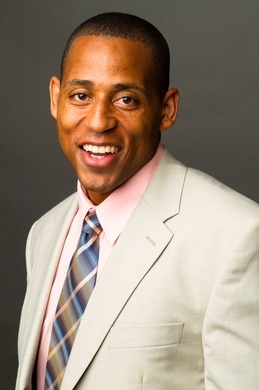
Sergeant First Class Cedric Jermel King entered the United States Army in 1995. After completing Basic Combat Training and Advanced Individual Training he attended and completed United States Army Airborne School at Fort Benning GA.
Sergeant First Class King's first assignment was Ft Bragg NC where he served as an Air Traffic Operations Specialist. He then reclassified to 11B and applied to serve and was accepted into the 2nd of the 75th Ranger Regiment based out of FT Lewis WA, there he would serve as a rifleman and Machine Gunner. Sergeant King next moved to the 101st Airborne Division (Air Assault) there he served as team leader, Squad leader, and Weapons Squad leader while deployed to Operation Iraqi Freedom in 2003. He then spent 2 years serving at the United States Army Airborne School Serving as an Airborne Instructor, he then was chosen to instruct at the United States Army Pathfinder School where he would teach for 4 more years. He returned to Ft Bragg NC where he was chosen to serve as a First Sergeant of Bravo Company 1-505 PIR while still a Sergeant First Class. The unit would deploy to Afghanistan in 2011 while Sergeant King would serve as the First Sergeant he would also receive the opportunity to serve as a platoon sergeant the following summer logging two continuous summers in Afghanistan. The second tour would prove to be a fateful one as an insurgent Improvised Explosive device would challenge himself and his family. He now is on the long road to full recovery stationed at the Walter Reed National Naval Medical Center in Bethesda Md.
Sergeant First Class King has attended and Graduated from all levels of the United States Army education system except the United Army Sergeants Major Academy. He is a graduate of the United States Army Jumpmaster Course, United States Army Pathfinder course, the Air Assault course, The United States Army Ranger Course, as well as several other courses.
Sergeant First Class King is a recipient of the Bronze Star medal, the Purple heart, the Meritorious Service Medal and several more.
Sergeant First Class King hails from Norlina North Carolina, and is married to Khieda King. Sergeant First Class King have two daughters named Amari and Khamya
Sergeant First Class King's first assignment was Ft Bragg NC where he served as an Air Traffic Operations Specialist. He then reclassified to 11B and applied to serve and was accepted into the 2nd of the 75th Ranger Regiment based out of FT Lewis WA, there he would serve as a rifleman and Machine Gunner. Sergeant King next moved to the 101st Airborne Division (Air Assault) there he served as team leader, Squad leader, and Weapons Squad leader while deployed to Operation Iraqi Freedom in 2003. He then spent 2 years serving at the United States Army Airborne School Serving as an Airborne Instructor, he then was chosen to instruct at the United States Army Pathfinder School where he would teach for 4 more years. He returned to Ft Bragg NC where he was chosen to serve as a First Sergeant of Bravo Company 1-505 PIR while still a Sergeant First Class. The unit would deploy to Afghanistan in 2011 while Sergeant King would serve as the First Sergeant he would also receive the opportunity to serve as a platoon sergeant the following summer logging two continuous summers in Afghanistan. The second tour would prove to be a fateful one as an insurgent Improvised Explosive device would challenge himself and his family. He now is on the long road to full recovery stationed at the Walter Reed National Naval Medical Center in Bethesda Md.
Sergeant First Class King has attended and Graduated from all levels of the United States Army education system except the United Army Sergeants Major Academy. He is a graduate of the United States Army Jumpmaster Course, United States Army Pathfinder course, the Air Assault course, The United States Army Ranger Course, as well as several other courses.
Sergeant First Class King is a recipient of the Bronze Star medal, the Purple heart, the Meritorious Service Medal and several more.
Sergeant First Class King hails from Norlina North Carolina, and is married to Khieda King. Sergeant First Class King have two daughters named Amari and Khamya
Army CPL - Michael "Mike" Vasquez
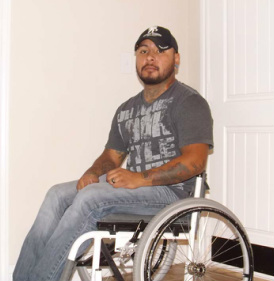
CPL Michael “Mike” Vasquez joined the military at age 17 during high school and quickly finished his senior year at Estacado Senior High School in Lubbock, TX in a matter of weeks to make a time slot for One Station Unit Training (OSUT). He went to OSUT at Ft. Benning, Georgia in 2005. Soon after completing his OSUT, Michael attended Airborne School at Ft. Benning as well. Upon completion of his training, Mike went to Iraq in 2007 and 2008 with E company 3/144 Infantry on a volunteer deployment since he was eager to deploy. During that time, Michael served as a Machine Gunner with a small team of other soldiers protecting civilian contractors recovering destroyed military vehicles. After Michael came home in 2008 from Iraq, he again volunteered to deploy to Afghanistan with a military intelligence unit out of Austin Texas (636 Military Intelligence Bn.) as a PSD (protective security detail) for the M.I. soldiers. Before going to Afghanistan, Michael was sent to train as a SDM (Squad designated marksman) at Ft. Benning, GA, train in Colorado Springs Colorado at multiple civilian contractor training courses and learned many roles of military intelligence during the time there and was designated as a team leader for multimedia exploitation and emplacing numerous cameras to in various areas of Afghanistan behind enemy lines to capture high value targets and IED emplacing Taliban teams. Michael’s primary job was as a gunner and SDM during the mission and served with Two SF units: ODA 9224 and 2221 of 19th group Special Forces as a machine gunner when needed. On a mission on July 10, 2009 Mike along with units from the M.I. Battalion, ODA 9224 and other American Units were on a mission and Mike’s vehicle was hit with RPGs severely injuring Mike in the Gunner’s turret. Mike, unaware he was injured, continued to fight the enemy, eliminating the threat and helped get other injured comrades to safety to be medevac’d. As medical teams flew in, Mike began not to feel well and was told he was injured. Mike suffered a Traumatic Brain Injury, spinal contusion, shrapnel, abdominal wounds, partial blindness, left side paralysis, and other smaller injuries. Mike was bound to a wheelchair for the next seven months recovering at Landstuhl, Germany, Walter Reed and finally closer to home at BAMC (Brooke Army Medical Center) at Ft. Sam Houston, TX. After learning to walk again, and being discharged from service, Michael continued to go to medical appointments at the VA in Lubbock Texas. Almost a year after his injuries in Afghanistan in 2009, Michael went in for an MRI and discovered he had a rare brain condition known as Chiari Malformation as a result of the Traumatic Brain Injury in Afghanistan. He finally underwent brain Surgery on July 23, 2013 and once again is wheelchair bound, expected to walk again in the near future. Michael’s military awards include: Bronze Star with Valor, Purple Heart, Army Commendation Medal with one oak cluster, Army Achievement Medal, National Defense Service Medal, Afghanistan Campaign Medal with campaign star, Global War on Terrorism Service Medal, Armed Forces Reserve Medal with “M” Device, Army Service Ribbon, Overseas Service Ribbon, OIF Campaign Medal with Campaign Star, Combat Infantry Badge, Combat Action Badge, Texas Purple Heart, and the Texas Combat Service Medal.
USAF TSgt - Jason Morgan
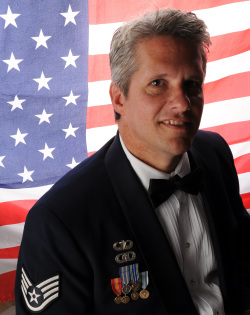
SSgt Jason Morgan, US Air Force Special Operations Command (airborne) 1989 - 1999. 100% Medically retired.
I enlisted in the Air Force in 1989 and worked as a combat weatherman which is an airborne unit the provided weather for Army special operations on missions and behind enemy lines. In 1999, while on a counter narcotics mission in South America, I was attached to the 160th SOAR. During a counter narcotics mission, I was nearly fatally wounded and woke up two months later from a coma, paralyzed from the waist down.
After my injury, I became very active in sports and competed on Team Air Force in the military Paralympic Games winning several medals in swimming, wheelchair basketball and track and field events. Using adaptive equipment, I still water and snow ski, SCUBA dive, fly private planes and more. I volunteer with my service dog, Napal at local hospitals by visiting patients. Napal and speak all over the country helping other disabled veterans received highly trained service dogs as well as speaking at local schools, events, Boy Scouts, etc educating kids about disabilities, service dogs and over coming adversity.
Recently, I competed in the Marine Corps Marathon in Washington DC pushing all 26.2 miles in my racing wheelchair.
I enlisted in the Air Force in 1989 and worked as a combat weatherman which is an airborne unit the provided weather for Army special operations on missions and behind enemy lines. In 1999, while on a counter narcotics mission in South America, I was attached to the 160th SOAR. During a counter narcotics mission, I was nearly fatally wounded and woke up two months later from a coma, paralyzed from the waist down.
After my injury, I became very active in sports and competed on Team Air Force in the military Paralympic Games winning several medals in swimming, wheelchair basketball and track and field events. Using adaptive equipment, I still water and snow ski, SCUBA dive, fly private planes and more. I volunteer with my service dog, Napal at local hospitals by visiting patients. Napal and speak all over the country helping other disabled veterans received highly trained service dogs as well as speaking at local schools, events, Boy Scouts, etc educating kids about disabilities, service dogs and over coming adversity.
Recently, I competed in the Marine Corps Marathon in Washington DC pushing all 26.2 miles in my racing wheelchair.
USAF TSgt, EOD Tech - Darryl "DJ" Dutton
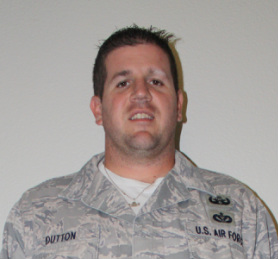
TSgt (R) Darryl J. Dutton spent 12 years in the U.S. Air Force in various locations around the world. He joined the military in November 2000 from his hometown of Milton, Vermont. His assignments included Dyess AFB, TX, Eglin AFB, FL, Incirlik AB, Turkey, and Hickam AFB, HI. He also deployed from those locations 6 times to Oman, Iraq, and Afghanistan.
During his final mission in Afghanistan, his unit was injured by a buried improvised explosive device, and caused damage to TSgt’s Dutton left arm and leg. He was immediately medevac’d to Kandahar and spent 1 month in various hospitals, ending with Brooke Army Medical Center, in San Antonio, TX.
His injuries caused him to be medically retired, in December 2012, from the Air Force and begin his civilian life. TSgt Dutton now resides back in his home state of Vermont and is still continuing his government service with the US Citizen and Immigration Services in St. Albans, VT.
During his final mission in Afghanistan, his unit was injured by a buried improvised explosive device, and caused damage to TSgt’s Dutton left arm and leg. He was immediately medevac’d to Kandahar and spent 1 month in various hospitals, ending with Brooke Army Medical Center, in San Antonio, TX.
His injuries caused him to be medically retired, in December 2012, from the Air Force and begin his civilian life. TSgt Dutton now resides back in his home state of Vermont and is still continuing his government service with the US Citizen and Immigration Services in St. Albans, VT.
USMC SSgt, EOD Tech - Dominc Chavez
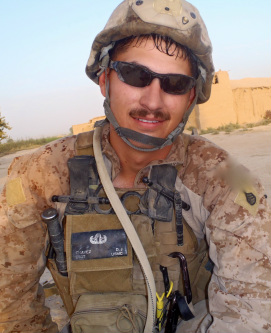
SSgt Dominc Chavez enlisted in the United States Marine Corps February 2003 and shipped off to Marine Corps Recruit Depot August 4 2003.
Upon completion of the School of Infantry, Marine Combat Training in Camp Pendleton, CA he attended Aviation and Calibration schools located in Naval Air Station Pensacola, FL and Keesler AFB Biloxi MS, becoming a Precision Measurements Avionics Calibration Technician, and was stationed at Marine Corps Air Station Miramar, CA.
In January 2006 he was individual augmented to MWSG-37 Security Battalion and deployed to Al Asad, Iraq in support of Operation Iraqi Freedom. Early 2007 he re-enlisted and changed Military Occupational Specialties to Explosive Ordnance Disposal and reported to EOD school at Eglin AFB Niceville, FL. Upon completion of EOD school he served on the EOD Base team, Marine Corps Air Ground Combat Center, 29 Palms, CA. October 2010 he reported to 2nd EOD Company, Camp Lejeune, NC.
He deployed to Helmand Province, Afghanistan April 2011 in support of Operation Enduring Freedom 11-2. March 2013 he deployed again to Helmand province, Afghanistan and provided EOD support the the Georgian Army. 29 April 2013 SSgt Chavez and his team received an Improvised Explosive Device (IED) 9 line. SSgt Chavez’s two robotics platforms malfunctioned and he manually rendered safe a Command Wire IED. While collecting the evidence he functioned a secondary IED which resulted in a left above the knee amputation.
With the support of his wonderful wife, son, and two daughters, he is making a great recovery at Walter Reed Bethesda, MD.
Upon completion of the School of Infantry, Marine Combat Training in Camp Pendleton, CA he attended Aviation and Calibration schools located in Naval Air Station Pensacola, FL and Keesler AFB Biloxi MS, becoming a Precision Measurements Avionics Calibration Technician, and was stationed at Marine Corps Air Station Miramar, CA.
In January 2006 he was individual augmented to MWSG-37 Security Battalion and deployed to Al Asad, Iraq in support of Operation Iraqi Freedom. Early 2007 he re-enlisted and changed Military Occupational Specialties to Explosive Ordnance Disposal and reported to EOD school at Eglin AFB Niceville, FL. Upon completion of EOD school he served on the EOD Base team, Marine Corps Air Ground Combat Center, 29 Palms, CA. October 2010 he reported to 2nd EOD Company, Camp Lejeune, NC.
He deployed to Helmand Province, Afghanistan April 2011 in support of Operation Enduring Freedom 11-2. March 2013 he deployed again to Helmand province, Afghanistan and provided EOD support the the Georgian Army. 29 April 2013 SSgt Chavez and his team received an Improvised Explosive Device (IED) 9 line. SSgt Chavez’s two robotics platforms malfunctioned and he manually rendered safe a Command Wire IED. While collecting the evidence he functioned a secondary IED which resulted in a left above the knee amputation.
With the support of his wonderful wife, son, and two daughters, he is making a great recovery at Walter Reed Bethesda, MD.
USMC GySgt, EOD Tech - Chris Wellman
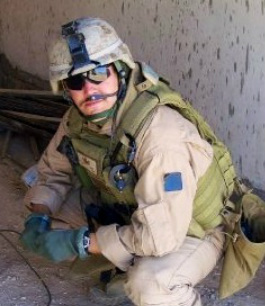
My name is Christopher Wellman; I was born in Boise Idaho.
I joined the United States Marine Corps in 1999 at the age of 21, my primary MOS was 0351 Anti-Tank Assault. I did a lateral move into EOD in 2003 at the end of my first enlistment. I spent 7 years at 2nd EOD Company located at Camp Lejeune.
I did two combat tours to Iraq; I was injured at the end of my second tour when our vehicle, a 4x4 JERRV was struck by a command wire IED and our vehicle was thrown approximately 25 to 30 feet in the air. I primarily sustained injuries to my brain, neck and back.
I was medically retired from the Marine Corps in 2010 at the rank of Gunnery Sergeant.
I joined the United States Marine Corps in 1999 at the age of 21, my primary MOS was 0351 Anti-Tank Assault. I did a lateral move into EOD in 2003 at the end of my first enlistment. I spent 7 years at 2nd EOD Company located at Camp Lejeune.
I did two combat tours to Iraq; I was injured at the end of my second tour when our vehicle, a 4x4 JERRV was struck by a command wire IED and our vehicle was thrown approximately 25 to 30 feet in the air. I primarily sustained injuries to my brain, neck and back.
I was medically retired from the Marine Corps in 2010 at the rank of Gunnery Sergeant.
USAF Tsgt, EOD Tech - Adam Popp
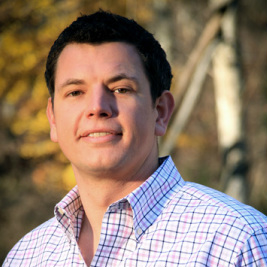
USAF Tsgt Adam Popp is 12-year combat veteran of the U.S. Air Force and has been deployed to Iraq and Afghanistan as an EOD Team Leader.
After being wounded in Afghanistan, he was visited at the hospital by members of the Wounded EOD Warrior Foundation and found it a very humbling experience and wanted to get involved.
He is certified by the Amputee Coalition of America (ACA) as a peer visitor for amputees and other severely wounded. He currently leads a very active life by working full time for Shoulder2Shoulder, Inc. attending school and doing several outdoor activities.
After being wounded in Afghanistan, he was visited at the hospital by members of the Wounded EOD Warrior Foundation and found it a very humbling experience and wanted to get involved.
He is certified by the Amputee Coalition of America (ACA) as a peer visitor for amputees and other severely wounded. He currently leads a very active life by working full time for Shoulder2Shoulder, Inc. attending school and doing several outdoor activities.
Army SSgt, EOD - Kiel Vickers
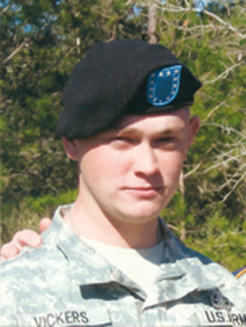
SSG Kiel Vickers born in West Covina California.
He grew up in San Dimas CA and graduated San Dimas high school in 2004.
After a short attendance of college he decided to enlist into the US Army.
In February 2007, he graduated EOD school and was stationed in Fort Drum, NY. While stationed at Ft drum, he deployed to Iraq 2008-2009. In 2011, Kiel deployed as a Team Leader to Afghanistan.
While on a mission on 21 November 2011, SSG Vickers stepped on an IED resulting in the amputation of his left leg above the knee.
Since his injury SSG Vickers has completed therapy and is working to stay in the Army as an EOD technician.
He grew up in San Dimas CA and graduated San Dimas high school in 2004.
After a short attendance of college he decided to enlist into the US Army.
In February 2007, he graduated EOD school and was stationed in Fort Drum, NY. While stationed at Ft drum, he deployed to Iraq 2008-2009. In 2011, Kiel deployed as a Team Leader to Afghanistan.
While on a mission on 21 November 2011, SSG Vickers stepped on an IED resulting in the amputation of his left leg above the knee.
Since his injury SSG Vickers has completed therapy and is working to stay in the Army as an EOD technician.
USMC Ssgt, EOD Tech - Thomas Trotter
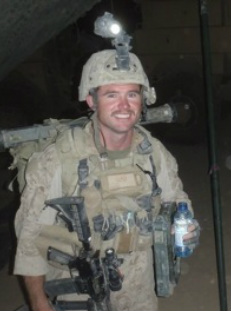
Tom Trotter Joined the Marine Corps straight out of high school in September of 2003. He graduated Military Police School in May of 2004 and was assigned to Marine Wing Support Squadron 373 in July of 2004. He deployed to Iraq one month later from August 2004-March 2005. His unit provided dedicated security to a Marine (EOD) Explosive Ordnance Disposal team operating in the area between Ramadi and Fallujah, primarily clearing IED’s along route Michigan. He was nearly killed by a 60mm Mortar during that deployment as well, but made it away with only scratches. He deployed to Iraq again to the same area from January 2006-August 2006. He then decided to become an EOD Technician, and left for EOD School in August 2007. He graduated EOD School in June of 2008, and was assigned to 8th Engineer Support Battalion, 2nd Explosive Ordnance Disposal Company, and Camp Lejeune NC. He deployed with the 22nd (MEU) Marine Expeditionary Unit from May 2009-Dec 2009 to the Mediterranean where he conducted training and support for Infantry Units from 3/2. After returning home from that deployment they were recalled back to deployment in order to deploy to Haiti in support of the Earthquake disaster relief from January 2010-April 2010. On his last deployment he was sent to Sangin, Afghanistan as an EOD Tech attached to 2nd Recon Battalion from April 2011-June2011.
On June 14, 2011 Tom Trotter was conducting a walking patrol in the upper Sangin Valley with a Recon platoon when there patrol was ambushed with machine gun fire and RPGs. He was shot by an AK-74 on his left side, hitting him in the left tricep and coming to rest in his forearm. The round instantly severed his radial nerve and brachial Artery. He was medevac’d out of country due to the long-term recovery of the radial nerve. The bullet lodged in his forearm and was removed back in the states. He suffered from radial nerve palsy or wrist drop, which prevented him from opening his fingers on his own. After 6 months of physical therapy his fingers woke up and began to function. Other than his thumb never kicking on, he still has muscular and joint problems as a result of the trauma, but he is doing great now.
Tom Trotter has two daughters who live with him in Florida. Mackenzie and Cheyenne are 6 and 4, respectively. Tom is going to school full time utilizing his GI Bill and is enjoying life after the Marine Corps.
On June 14, 2011 Tom Trotter was conducting a walking patrol in the upper Sangin Valley with a Recon platoon when there patrol was ambushed with machine gun fire and RPGs. He was shot by an AK-74 on his left side, hitting him in the left tricep and coming to rest in his forearm. The round instantly severed his radial nerve and brachial Artery. He was medevac’d out of country due to the long-term recovery of the radial nerve. The bullet lodged in his forearm and was removed back in the states. He suffered from radial nerve palsy or wrist drop, which prevented him from opening his fingers on his own. After 6 months of physical therapy his fingers woke up and began to function. Other than his thumb never kicking on, he still has muscular and joint problems as a result of the trauma, but he is doing great now.
Tom Trotter has two daughters who live with him in Florida. Mackenzie and Cheyenne are 6 and 4, respectively. Tom is going to school full time utilizing his GI Bill and is enjoying life after the Marine Corps.
Army SP4, Medic - Chris Tucker
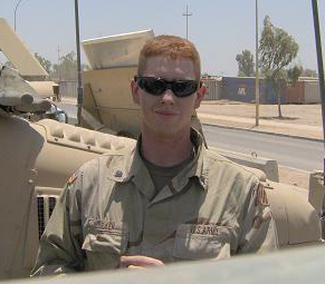
When I was just a kid I always wanted to be a soldier and serve in the military like the rest of my family. When I turned 18 I joined the army while I was still in high school. In July of 2003 I arrived in Fort Jackson, South Carolina where I completed basic training then sent to Fort Sam Houston, Texas where I mastered the skills of being a combat medic. In February of 2004 I received orders for my first duty station, Fort Stewart, Georgia. Upon my arrival I was assigned to 3rd infantry division, 2nd BCT, 1-64 Armor battalion.
Within a year I found myself in Baghdad Assigned to a mortar platoon. The first month in country was a big eye opener that month I had my first patient due to a combat injury which was also the first time I seen some one pass away in front of me. In June I was attached to a Bradley platoon for a week to conduct check point security. On the final day of the rotation my Bradley was struck by a VBID. The vehicle crossed the road and hit us in the side that I was sitting on. The impact tossed me across the Bradley and I suffered a concussion and hearing loss which I thought I recovered from. In the following months my platoon was assigned to almost every single combat operation that the battalion conducted. In the final week of our deployment we were taking the incoming unit on a tour of the AO when the second vehicle in the convoy of five was struck by an EFP IED my vehicle struck the back of the down vehicle to push them out of the kill zone. When the vehicles collided my left knee was slammed into the retaining bar behind the driver tearing my minus in my left knee and straining my ligaments. After the initial shock of what was going on passed I exited my vehicle to make it to the down vehicle. When I opened my door my window was struck with small arms fire. After quickly returning fire I made my way to my soldiers to find only one was seriously injured. After the small arms fire stopped I was able to evac my soldier to the nearest aid station for treatment where he survived his injury’s. Upon redeployment I underwent a surgery which did repair my knee but afterwards was unable to flex it fully rendering me combat ineffective and being the biggest shot to the gut that I ever had. I am now being treated by the VA for PTSD, Hearing loss, Knee pain and chronic headaches. My physical injuries are healing well the nonphysical ones are the ones that take time and are the hardest to cope with. It is a day to day struggle with the littlest things resulting in cold sweats and sleepless nights.
Within a year I found myself in Baghdad Assigned to a mortar platoon. The first month in country was a big eye opener that month I had my first patient due to a combat injury which was also the first time I seen some one pass away in front of me. In June I was attached to a Bradley platoon for a week to conduct check point security. On the final day of the rotation my Bradley was struck by a VBID. The vehicle crossed the road and hit us in the side that I was sitting on. The impact tossed me across the Bradley and I suffered a concussion and hearing loss which I thought I recovered from. In the following months my platoon was assigned to almost every single combat operation that the battalion conducted. In the final week of our deployment we were taking the incoming unit on a tour of the AO when the second vehicle in the convoy of five was struck by an EFP IED my vehicle struck the back of the down vehicle to push them out of the kill zone. When the vehicles collided my left knee was slammed into the retaining bar behind the driver tearing my minus in my left knee and straining my ligaments. After the initial shock of what was going on passed I exited my vehicle to make it to the down vehicle. When I opened my door my window was struck with small arms fire. After quickly returning fire I made my way to my soldiers to find only one was seriously injured. After the small arms fire stopped I was able to evac my soldier to the nearest aid station for treatment where he survived his injury’s. Upon redeployment I underwent a surgery which did repair my knee but afterwards was unable to flex it fully rendering me combat ineffective and being the biggest shot to the gut that I ever had. I am now being treated by the VA for PTSD, Hearing loss, Knee pain and chronic headaches. My physical injuries are healing well the nonphysical ones are the ones that take time and are the hardest to cope with. It is a day to day struggle with the littlest things resulting in cold sweats and sleepless nights.
Army SSG - Joel Tavera
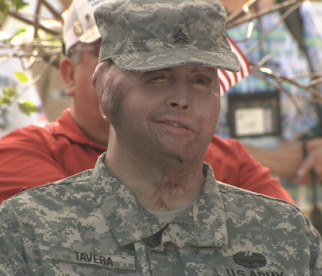
Army Sgt. Joel Tavera is one of those truly remarkable people who, if you spend even a few minutes talking to him, any problems you think you have fade away.
Tavera was horrifically injured in Iraq on March 12, 2008, in an attack that killed three others and wounded Tavera and another soldier.
Tavera, who was volunteering for a mission shortly before he was supposed to head home, remembers a rocket exploding near his up-armored Chevy Suburban. Then came a panic attack. He opened the door. Then came the whistle – the sound of another rocket, heading straight for the Suburban.
He was severely burned, had traumatic brain injury, lost part of his right leg, the sight in both his eyes, the fingers on his left hand and had to undergo many painful surgeries.
Fast forward a few years.
Hillsborough County Fire Rescue’s Kelly Hallman heard that Tavera needed a home. When not fighting fires, is an architect and, among other things, designs houses. So, working with the Building Homes for Heroes, a non-profit that supports the needs of severely wounded or disabled veterans and their families through building mortgage-free homes, Hallman designed a home for someone who couldn’t walk and needed full-time nursing. Hallman tells a funny story about what happened when Tavera learned of the plans. His response as he walked up to Hallman with a prosthetic on his right leg speaks volumes for a recovery that can only be considered miraculous.
“He said, ‘Get that out of my house,’” Hallman says of Tavera’s response to being told of plans for wheelchair access, a nursing station and a therapy room . “I don’t need that.’ I said, ‘You are right, you don’t need that,’ and I took it out.”
Joel continues to be a strong role model in showing people that they can move forward and make a difference regardless of their setbacks.
Tavera was horrifically injured in Iraq on March 12, 2008, in an attack that killed three others and wounded Tavera and another soldier.
Tavera, who was volunteering for a mission shortly before he was supposed to head home, remembers a rocket exploding near his up-armored Chevy Suburban. Then came a panic attack. He opened the door. Then came the whistle – the sound of another rocket, heading straight for the Suburban.
He was severely burned, had traumatic brain injury, lost part of his right leg, the sight in both his eyes, the fingers on his left hand and had to undergo many painful surgeries.
Fast forward a few years.
Hillsborough County Fire Rescue’s Kelly Hallman heard that Tavera needed a home. When not fighting fires, is an architect and, among other things, designs houses. So, working with the Building Homes for Heroes, a non-profit that supports the needs of severely wounded or disabled veterans and their families through building mortgage-free homes, Hallman designed a home for someone who couldn’t walk and needed full-time nursing. Hallman tells a funny story about what happened when Tavera learned of the plans. His response as he walked up to Hallman with a prosthetic on his right leg speaks volumes for a recovery that can only be considered miraculous.
“He said, ‘Get that out of my house,’” Hallman says of Tavera’s response to being told of plans for wheelchair access, a nursing station and a therapy room . “I don’t need that.’ I said, ‘You are right, you don’t need that,’ and I took it out.”
Joel continues to be a strong role model in showing people that they can move forward and make a difference regardless of their setbacks.
USMC CPL, Infantry - Robert Tyler Hallock
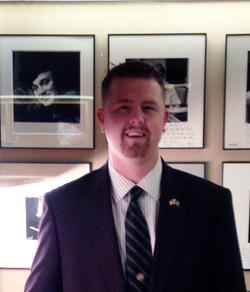
My full name is Robert Tyler Hallock and I'm a United States Marine Corps (USMC) veteran. I was born in Germany on April 17, 1987. After I graduated from James Buchanan High School it was then I realized I wanted to make a difference in my life and the lives of others. I enlisted in the Marines in 2005 when turned 18, and separated after 4 years of service in 2009. After boot camp I chose the MOS of 0331 a machine gunner. I was stationed in Camp Lejeune, North Carolina, and served 2 deployments overseas. I pick up my last rank if Corporal (E-4) when I was on my second deployment to Iraq in 2008.
I had a couple of foot surgeries that took me a little while to heal from directly after the completion of my deployment to Iraq in 2008.I had to have both feet operated on due to the wear my feet incurred from the physical demand of the Marine Corps . During my recuperation period I met my neighbor at that time-- SSgt James Ownbey who I call Jim. Jim worked EOD in the Marines in Camp Lejeune and had overcome unspeakable struggles. I credit him for getting me involved with the wounded warrior events, especially EOD Functions.
I completed my service with the USMC in October 2009 and moved to Martinsburg, West Virginia with my family. I purchased a house in the last year with my wife and son. Adapting back into the civilian lifestyle has not been easy. My family has been and continues to be very supportive. They have been by side since the beginning.
I currently suffer from PTSD and Jim has been a huge help in assisting me with understanding and working through the disorder. He has changed my life and opened a door to allow me to be involved with other veterans.
For me to have so many memories with other wounded vets and to be able to tell a story with them and hear their stories …… My “Bio” has just begun.
I had a couple of foot surgeries that took me a little while to heal from directly after the completion of my deployment to Iraq in 2008.I had to have both feet operated on due to the wear my feet incurred from the physical demand of the Marine Corps . During my recuperation period I met my neighbor at that time-- SSgt James Ownbey who I call Jim. Jim worked EOD in the Marines in Camp Lejeune and had overcome unspeakable struggles. I credit him for getting me involved with the wounded warrior events, especially EOD Functions.
I completed my service with the USMC in October 2009 and moved to Martinsburg, West Virginia with my family. I purchased a house in the last year with my wife and son. Adapting back into the civilian lifestyle has not been easy. My family has been and continues to be very supportive. They have been by side since the beginning.
I currently suffer from PTSD and Jim has been a huge help in assisting me with understanding and working through the disorder. He has changed my life and opened a door to allow me to be involved with other veterans.
For me to have so many memories with other wounded vets and to be able to tell a story with them and hear their stories …… My “Bio” has just begun.
Navy SEAL - Jason "Jay" Redman
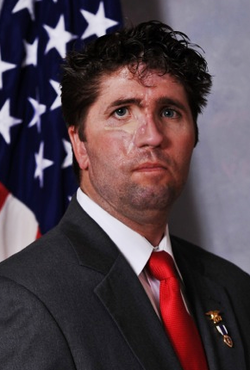
Former LT Jason Redman joined the Navy on September 11, 1992 and spent 11 years as an enlisted SEAL. Jason headed to Old Dominion University in August of 2001, graduating Summa Cum Laude with a Bachelors Degree in Business Management. He completed his time with the Hampton Roads Naval ROTC as Student Battalion Commanding Officer before he was commissioned in May of 2004 as a Naval SEAL Officer.
In May of 2006, he graduated from the grueling US Army Ranger School and deployed to Fallujah, Iraq the following year. In September of 2007 while acting as Assault Force Commander to capture an Al Qaeda High Value Individual, LT Redman’s Assault Team came under heavy machine gun and small arms fire and he was severely wounded in the ensuing firefight.
While recovering at Bethesda Naval Medical Center, LT Redman hung a bright orange sign on his door, which became a statement for wounded warriors everywhere. This sign gained national recognition and now hangs in the Wounded Ward at the Bethesda Medical Center. After 37 surgeries, Jason uses his positive attitude to motivate others and to continue to raise awareness of the sacrifices of America’s military forces and their families. This drive led him to create Wounded Wear, a Non-Profit organization designed to provide clothing kits and clothing modifications to America’s wounded warriors, and to promote awareness throughout the country of the sacrifices that wounded service members have made in the name of freedom.
In Jason’s spare time he speaks across the country spreading his message of life, inspiration, and shedding light on the sacrifices that enable the Freedoms of our country. He has spoken to many great organizations including the Marriott Corporation, the NFL Cincinnati Bengals, and even giving a speech to the US Men’s 2010 Olympic Hockey team prior to their first game. He was recognized in November of 2009 by his alma mater Old Dominion University with their prestigious Alumni Service Award and was a 2010 recipient of the Hope and Courage award.
In July 2010, Jason joined three other wounded service members and reached the summit of Mount Rainier as a testament to wounded warriors and all Americans that there is no obstacle that cannot be overcome if you have the drive, the determination, and the tenacity to rise above.
His personal military decorations include the Bronze Star Medal with Valor, Purple Heart, Navy Commendation Medal, Joint Service Achievement Medal, Navy Achievement Medal (five awards), and Combat Action Ribbon (two awards).
In May of 2006, he graduated from the grueling US Army Ranger School and deployed to Fallujah, Iraq the following year. In September of 2007 while acting as Assault Force Commander to capture an Al Qaeda High Value Individual, LT Redman’s Assault Team came under heavy machine gun and small arms fire and he was severely wounded in the ensuing firefight.
While recovering at Bethesda Naval Medical Center, LT Redman hung a bright orange sign on his door, which became a statement for wounded warriors everywhere. This sign gained national recognition and now hangs in the Wounded Ward at the Bethesda Medical Center. After 37 surgeries, Jason uses his positive attitude to motivate others and to continue to raise awareness of the sacrifices of America’s military forces and their families. This drive led him to create Wounded Wear, a Non-Profit organization designed to provide clothing kits and clothing modifications to America’s wounded warriors, and to promote awareness throughout the country of the sacrifices that wounded service members have made in the name of freedom.
In Jason’s spare time he speaks across the country spreading his message of life, inspiration, and shedding light on the sacrifices that enable the Freedoms of our country. He has spoken to many great organizations including the Marriott Corporation, the NFL Cincinnati Bengals, and even giving a speech to the US Men’s 2010 Olympic Hockey team prior to their first game. He was recognized in November of 2009 by his alma mater Old Dominion University with their prestigious Alumni Service Award and was a 2010 recipient of the Hope and Courage award.
In July 2010, Jason joined three other wounded service members and reached the summit of Mount Rainier as a testament to wounded warriors and all Americans that there is no obstacle that cannot be overcome if you have the drive, the determination, and the tenacity to rise above.
His personal military decorations include the Bronze Star Medal with Valor, Purple Heart, Navy Commendation Medal, Joint Service Achievement Medal, Navy Achievement Medal (five awards), and Combat Action Ribbon (two awards).
Army CPL, EOD Tech - Mathew Rodriquez
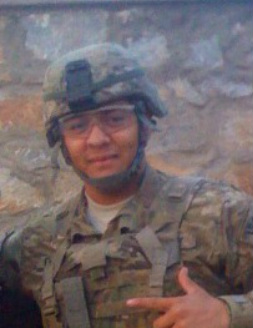
I enlisted in the military June 1,2007 at the age 19 years old, I did my Basic training at fort Jackson South Carolina, upon completion of Basic I attend 88M course in fort Lenardwood, Missouri. My first duty station was at fort Polk,Louisiana were I was assigned to 5th aviation unit were I was assigned to the post command sergeant major aide, during my stay with 5th aviation I was sent and completed my Airborne school and my ripp school for pre-ranger course, I also got to level 3 of combatives and being certified, after of doing a few years of 88M I crossed trained and went to combat engineering school were I learned about explosives and dealing and finding objects in the ground and above, i also was statiomed in fort brag with 1st brigade and also with my last unit with 4th/brigade 10 mountain. I deployed twice in my military career, first was in December of 2007 for 6 months and the next was in September of 2010 for a year, my second deployment was when I gotten Hurt in a IED explosion in the southern Provence of Afghanistan were I fractured 2 of my lumbar Vertebrae's, and nerve damage, I was later air medivac out of country and back to the states were I was sent to wounded warrior battalion and which I was later medically discharge of the United state army in Febuary 23,2012, I currently reside in Lubbock, TX and have 4 kids 1, girl and 3 boys. And Married to Ariel Adame who I've been with since 2008, one day I hopefully I can get on my feet more stable and take on future in law by any chance, cause I don't wan a stop helping people out in the world and that can be satisfying for me.
So whenever I pass a vet by walking and I see there wearing something relatedable to the military I will drive on and say Airborne
So whenever I pass a vet by walking and I see there wearing something relatedable to the military I will drive on and say Airborne
Navy EOD1, EOD Tech - Dave Hawxhurst
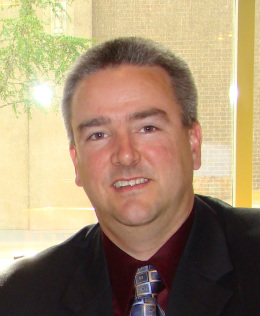
Mr. David Hawxhurst is currently assigned to the Joint IED Defeat Organization as an Analyst under the Analysis Branch of the Weapons Technical Intelligence Division.
A native of Ann Arbor Michigan, Mr. Hawxhurst enlisted in the United States Navy in 1992 and was assigned as a Fire Controlman (FC). Mr. Hawxhurst later attended the Naval School of Explosive Ordnance Disposal in 2001 and continued the remainder of his military career as an EOD Technician.
As a FC Mr. Hawxhurst severed on USS Acadia (AD-42) and USS Thach (FFG-43) as Close in Weapons System Supervisor (CIWS). At Aegis Technical Representative (AEGIS TECHREP), Mr. Hawxhurst was the only CIWS operator on assignment. EOD assignments include Mobile Unit Eleven, were he deployed as a Team Leader in support of OIF. On his second OIF deployment Mr. Hawxhurst was severely injured in the line of duty. After leaving the hospital Mr. Hawxhurst was assigned to Mobile Unit Two, Detachment Earle where he was a Demolition and Burn Supervisor. As a Demolition and Burn Supervisor he supported the Federal Air Marshalls with their Explosive & Explosive Effects training course.
In his personal time Mr Hawxhurst enjoys spending time with his wife Valerie. His hobbies include shooting, woodworking, building cars, electronics and building custom furniture.
A native of Ann Arbor Michigan, Mr. Hawxhurst enlisted in the United States Navy in 1992 and was assigned as a Fire Controlman (FC). Mr. Hawxhurst later attended the Naval School of Explosive Ordnance Disposal in 2001 and continued the remainder of his military career as an EOD Technician.
As a FC Mr. Hawxhurst severed on USS Acadia (AD-42) and USS Thach (FFG-43) as Close in Weapons System Supervisor (CIWS). At Aegis Technical Representative (AEGIS TECHREP), Mr. Hawxhurst was the only CIWS operator on assignment. EOD assignments include Mobile Unit Eleven, were he deployed as a Team Leader in support of OIF. On his second OIF deployment Mr. Hawxhurst was severely injured in the line of duty. After leaving the hospital Mr. Hawxhurst was assigned to Mobile Unit Two, Detachment Earle where he was a Demolition and Burn Supervisor. As a Demolition and Burn Supervisor he supported the Federal Air Marshalls with their Explosive & Explosive Effects training course.
In his personal time Mr Hawxhurst enjoys spending time with his wife Valerie. His hobbies include shooting, woodworking, building cars, electronics and building custom furniture.
Army SFC, Ranger - Corey Remsburg
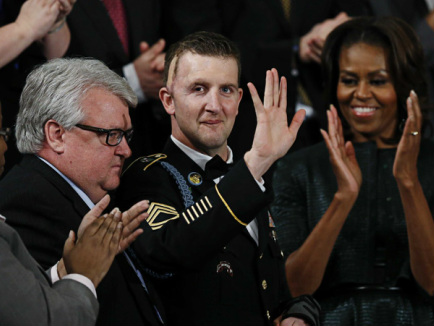
SFC Cory Jacob Remsburg was born in Phoenix, Arizona and moved to St. Louis, Missouri where he lived with his father and step mother, Craig and Annie Remsburg.
SFC Remsburg became interested in the U.S. Army Rangers while in high school. He entered the U.S. Army from his hometown of St. Louis, Missouri July 2001.
He attended One Station Unit Training, Basic Airborne Course and the Ranger Assessment and Selection Program at Fort Benning and was assigned to 1st Battalion, 75th Ranger Regiment, Hunter Army Airfield, Savannah, Georgia and currently served since 2002.
He has multiple deployments to both Iraq and Afghanistan.
SFC Remsburg was on his tenth combat rotation when he and his squad were conducting a combat operation involving multiple enemy contacts on October 1, 2009. His squad was responsible for killing nine enemy combatants and destroyed a large weapons cache. During the operation, SFC Remsburg was very seriously wounded by an improvised explosive device. At the time of the explosion, SFC Remsburg was thrown into a canal. He was rescued and rendered immediate lifesaving medical care by his fellow Rangers. He was airlifted to Kandahar Air Base for triage, and then to Bagram Air Field for surgery. He was medically evacuated to Landstuhl Regional Medical Center Germany where he spent two weeks receiving additional medical treatment. From there, SFC Remsburg was transferred to Bethesda Naval Hospital October 16, 2009 where he was treated for acute medical injures, and he remained in a coma condition.
On Nov 12, 2009, SFC Remsburg was transferred to the James Haley Veterans Hospital in Tampa, Florida. Since the initial injury, and over 3 months in a coma, Cory started to emerge into consciousness.
After nearly 15 months since his injury and being hospitalized, SFC Remsburg was moved to out-patient status, getting an apartment in Tampa and continuing his daily occupational, physical, vision and speech therapies at the Tampa VA Center.
Continuing his recovery and goal of some independent living, SFC Remsburg has moved from Tampa, FL to Los Angeles, CA and participated in the in-patient Casa Colina Transitional Living Center program. This program continued providing SFC Remsburg therapy services with an emphasis on learning to become ‘independent’.
SFC Remsburg recently returned home to the Phoenix, Arizona area, where he will continue his therapy recovery and start his new life. He is currently living his Dad and Step-Mother in Gilbert, Arizona, but is actively looking for his own home.
Throughout the past 3 ½ years, and several dozens of surgeries, SFC Remsburg is making remarkable progress, participating in local, state and national events, inspiring others to ‘keep pushing on’ when challenged by personal events.
SFC Remsburg’s military education includes the Emergency Medical Technician/Paramedic Refresher Course, Basic Airborne Course, Ranger Assessment and Selection Program, U.S. Army Ranger Course, Warrior Leader Course, Military Free Fall Parachutist Course, Jumpmaster Course, Combatives Level 1 and the Advanced Leader Course.
His awards and decorations include the Ranger Tab, the Combat Infantryman Badge, Expert Infantryman Badge, Senior Parachutist Badge, Military Free Fall Parachutist Badge and the Parachutist Badge.
He has also been awarded the Bronze Star, Purple Heart, Joint Service Commendation Medal, Army Commendation Medal for valor, Army Commendation Medal with one oak leaf cluster, Army Achievement Medal with one oak leaf cluster, Army Good Conduct Medal with three oak leaf clusters, National Defense Service Medal, Afghanistan Campaign Medal with combat star, Iraq Campaign Medal with combat star, Global War on Terrorism Expeditionary Medal, Global War on Terrorism Service Medal, Non-commissioned officer professional development ribbon, and the Army Service Ribbon.
SFC Remsburg became interested in the U.S. Army Rangers while in high school. He entered the U.S. Army from his hometown of St. Louis, Missouri July 2001.
He attended One Station Unit Training, Basic Airborne Course and the Ranger Assessment and Selection Program at Fort Benning and was assigned to 1st Battalion, 75th Ranger Regiment, Hunter Army Airfield, Savannah, Georgia and currently served since 2002.
He has multiple deployments to both Iraq and Afghanistan.
SFC Remsburg was on his tenth combat rotation when he and his squad were conducting a combat operation involving multiple enemy contacts on October 1, 2009. His squad was responsible for killing nine enemy combatants and destroyed a large weapons cache. During the operation, SFC Remsburg was very seriously wounded by an improvised explosive device. At the time of the explosion, SFC Remsburg was thrown into a canal. He was rescued and rendered immediate lifesaving medical care by his fellow Rangers. He was airlifted to Kandahar Air Base for triage, and then to Bagram Air Field for surgery. He was medically evacuated to Landstuhl Regional Medical Center Germany where he spent two weeks receiving additional medical treatment. From there, SFC Remsburg was transferred to Bethesda Naval Hospital October 16, 2009 where he was treated for acute medical injures, and he remained in a coma condition.
On Nov 12, 2009, SFC Remsburg was transferred to the James Haley Veterans Hospital in Tampa, Florida. Since the initial injury, and over 3 months in a coma, Cory started to emerge into consciousness.
After nearly 15 months since his injury and being hospitalized, SFC Remsburg was moved to out-patient status, getting an apartment in Tampa and continuing his daily occupational, physical, vision and speech therapies at the Tampa VA Center.
Continuing his recovery and goal of some independent living, SFC Remsburg has moved from Tampa, FL to Los Angeles, CA and participated in the in-patient Casa Colina Transitional Living Center program. This program continued providing SFC Remsburg therapy services with an emphasis on learning to become ‘independent’.
SFC Remsburg recently returned home to the Phoenix, Arizona area, where he will continue his therapy recovery and start his new life. He is currently living his Dad and Step-Mother in Gilbert, Arizona, but is actively looking for his own home.
Throughout the past 3 ½ years, and several dozens of surgeries, SFC Remsburg is making remarkable progress, participating in local, state and national events, inspiring others to ‘keep pushing on’ when challenged by personal events.
SFC Remsburg’s military education includes the Emergency Medical Technician/Paramedic Refresher Course, Basic Airborne Course, Ranger Assessment and Selection Program, U.S. Army Ranger Course, Warrior Leader Course, Military Free Fall Parachutist Course, Jumpmaster Course, Combatives Level 1 and the Advanced Leader Course.
His awards and decorations include the Ranger Tab, the Combat Infantryman Badge, Expert Infantryman Badge, Senior Parachutist Badge, Military Free Fall Parachutist Badge and the Parachutist Badge.
He has also been awarded the Bronze Star, Purple Heart, Joint Service Commendation Medal, Army Commendation Medal for valor, Army Commendation Medal with one oak leaf cluster, Army Achievement Medal with one oak leaf cluster, Army Good Conduct Medal with three oak leaf clusters, National Defense Service Medal, Afghanistan Campaign Medal with combat star, Iraq Campaign Medal with combat star, Global War on Terrorism Expeditionary Medal, Global War on Terrorism Service Medal, Non-commissioned officer professional development ribbon, and the Army Service Ribbon.
Army SFC, Airborne - Jonathan Langford
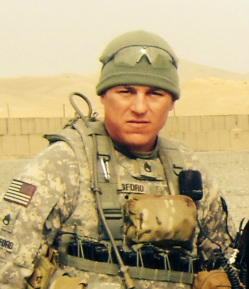
I joined the Army on 19 NOV 1997 from Leesburg, Fl, I finished high school and felt that college was not for me and I wanted to join for many reasons. I wanted the challenge and adventure and felt as a man it was my duty to serve, I enlisted as cargo transport specialist and was assigned as a mechanic in the 331st transportation company at Ft Eustis, Va. I met my wife Kristina and left the military in March of 2002 with and honorable discharge (ETS) and moved to Florida to start my family. I reentered the Army in DEC 2003 as an Infantryman 11B with
a sense of direction and purpose to provide for my family and fight for my
country. I went to Ft Campbell Ky where I trained for Iraq. I was in a scout
platoon in C company 1-61 Calvary and made my E-5 shortly before deployment to
Iraq in Nov of 2005. During this deployment I was an assistant team leader in
an 8 man scout team. While on a dismounted patrol along the Tigris River my
team came into contact with the enemy and I was struck with an anti-personnel
mine IED on 15 Aug 2006 upon the blast I was knocked to the ground and received
a blast concussion and bleeding from my ears. I was determined to stay in
country and support my soldiers during the recovery. I stayed on the FOB and
assisted the company with mission prep and security. I was cleared for combat
duty approx a month later and returned to my team. I was promoted to SSG in Oct
2006 and awarded an ARCOM with Valor for Exceptional Courage Under Fire
and Combat Heroism in East Baghdad, Purple Heart and Combat Infantry Badge.
I returned from Iraq and attended the Basic Noncommissioned Officer course and Airborne School at Ft Benning, Ga. In June of 2007 I attended the Special Forces Selection Course at Ft. Bragg, NC and was selected for 18B Special Forces Weapons Sergeant. I moved with my family to Ft Bragg and began the Qualification course, I did not finish the training due to my wife’s unfortunate miscarriage and made the decision to receive a compassionate withdraw from the course to be with my family as the rigors training required no distractions.
Upon release from the SFQC we pcs's to Vicenza, Italy. I was assigned to C company 1-503rd ABN my duty position was Weapons Squad leader. While training for deployment to Afghanistan I made the E-7/SFC promotion In OCT 2009 and reassigned to E company 1-503rd with the duty position of Platoon Sergeant.
I deployed to Afghanistan in NOV 2009 as a Platoon Sergeant in the Battalions support company, my duty consisted of route security and personnel security operations. On 9 FEB 2010 we were conducting security for a supply convoy in the Tangi Valley of eastern Afghanistan our vehicle was struck with an IED. Myself along with one other soldier was injured in the blast and was medevac to higher care. My injuries were three broken ribs, and I lost Consciousness for under a minute which was determined to be a Traumatic Brain injury.
I was sent to Landsthul Germany and sent home to recover. I was told that I was not required to return and finish the deployment however, I felt it was my duty to go back and finish it. I returned to Afghanistan to work in the tactical operations center (TOC) in April 2010, due to mission priority I volunteered to train the (ANA) Afghan Army on weapons and tactics. On 21 JUNE 2010 our element came under Taliban small arms fire, as we prepared to flank the enemy a grenade was thrown by an insurgent detonating approx 5 meters from me, I was thrown into the air and escaped only with shrapnel wounds and an injured back. This was the end of my combat duty and was sent to the WTU at Ft. Gordon, GA. Convinced yet again I was cleared for duty and pcs'd to Hawaii. I was assigned to the 196th Infantry as a senior Infantry Advisor and worked closely with the Hawaiian National guard, I began to feel very depressed at this time and sought help for PTSD and addiction This was the low point of my career and was sent to inpatient treatment for PTSD and addiction. I was sent to the Schofield Barracks, HI WTU for medical separation and then to Ft Stewart, GA WTU. I was medically retired on 27 june 2013 and was rated at 80% by the DOD and a proposed rating of 100% by the VA.
I returned from Iraq and attended the Basic Noncommissioned Officer course and Airborne School at Ft Benning, Ga. In June of 2007 I attended the Special Forces Selection Course at Ft. Bragg, NC and was selected for 18B Special Forces Weapons Sergeant. I moved with my family to Ft Bragg and began the Qualification course, I did not finish the training due to my wife’s unfortunate miscarriage and made the decision to receive a compassionate withdraw from the course to be with my family as the rigors training required no distractions.
Upon release from the SFQC we pcs's to Vicenza, Italy. I was assigned to C company 1-503rd ABN my duty position was Weapons Squad leader. While training for deployment to Afghanistan I made the E-7/SFC promotion In OCT 2009 and reassigned to E company 1-503rd with the duty position of Platoon Sergeant.
I deployed to Afghanistan in NOV 2009 as a Platoon Sergeant in the Battalions support company, my duty consisted of route security and personnel security operations. On 9 FEB 2010 we were conducting security for a supply convoy in the Tangi Valley of eastern Afghanistan our vehicle was struck with an IED. Myself along with one other soldier was injured in the blast and was medevac to higher care. My injuries were three broken ribs, and I lost Consciousness for under a minute which was determined to be a Traumatic Brain injury.
I was sent to Landsthul Germany and sent home to recover. I was told that I was not required to return and finish the deployment however, I felt it was my duty to go back and finish it. I returned to Afghanistan to work in the tactical operations center (TOC) in April 2010, due to mission priority I volunteered to train the (ANA) Afghan Army on weapons and tactics. On 21 JUNE 2010 our element came under Taliban small arms fire, as we prepared to flank the enemy a grenade was thrown by an insurgent detonating approx 5 meters from me, I was thrown into the air and escaped only with shrapnel wounds and an injured back. This was the end of my combat duty and was sent to the WTU at Ft. Gordon, GA. Convinced yet again I was cleared for duty and pcs'd to Hawaii. I was assigned to the 196th Infantry as a senior Infantry Advisor and worked closely with the Hawaiian National guard, I began to feel very depressed at this time and sought help for PTSD and addiction This was the low point of my career and was sent to inpatient treatment for PTSD and addiction. I was sent to the Schofield Barracks, HI WTU for medical separation and then to Ft Stewart, GA WTU. I was medically retired on 27 june 2013 and was rated at 80% by the DOD and a proposed rating of 100% by the VA.
USMC GySgt, EOD Tech - Eric Olson

I was born in Vancouver, Washington on January 6, 1980. I went to Goldendale H.S. in Goldendale, Washington. I earned a diploma from Goldendale H.S. in 1998. During high school I worked with my uncle performing general construction contracting.
My mother is Cindy Olson and Father is Phillip Olson. They both reside in Centerville, Washington. I have two younger brothers, Matthew and Wade. My wife, Brandi Olson, along with my daughters, Emma and Sophia have recently relocated back to Goldendale, WA for my medical retirement.
I enlisted in the Marine Corps Reserve in June 1997 and reported to 6th ESB Category P platoon to begin fulfilling my contract. I reported to MCRD San Diego in June 1998. Upon graduation in September 1998, I returned to 6th ESB. I reported to Basic Combat Engineer School in June 1999 as a LCpl and MCT in June 2001 as a Corporal. While at 6th ESB I deployed to Okinawa, Japan as part of a UDP, Alaska, and Belize. I also performed more than 6 months of ADSW to assist in Color Guard and Burial details.
In August of 2001 I applied for and was accepted to the Active Reserve Program and reported to VMFA-112 at Joint Reserve Naval Air Station Fort Worth, Texas in January 2002. Upon reporting, I immediately went to Powerplant and Fuel System A-School in Pensacola, Florida and F-18 C-School in El Centro, California. I also obtained the 5811 (Military Police) MOS as well as Marksmanship Coach MOS while stationed with VMFA-112. Also while stationed at VMFA-112 I graduated from Columbia College of Missouri with an Associate in Arts and a Baccalaureate Degree in interdisciplinary Studies. While stationed with VMFA-112 I deployed to Miramar twice, Eglin AFB, Elmendorf AFB, Norway, Hawaii twice, and completed 1 WestPac. I was promoted to Sergeant in April 2004. I then received orders to EOD School in Eglin AFB, Florida in June 2006 and graduated as the Honor Graduate in April 2007.
After graduation from NAVSCHOLEOD I served as an Explosive Ordnance Disposal (EOD) Technician at 9th Engineer Support Battalion. I was promoted to Staff Sergeant in August 2008. While at 9th ESB, my deployments include KITP 07(South Korea), Balikitan 08(Phillipines), OIF 08-2 as a Team Leader, and a Far East float as a Team Leader with 31st MEU Force Reconnaissance Platoon. I attended Silver Flag, SNCO Academy Career Course, Dynamic Entry, Dynamic Assault, completed the Joint Services Senior SNCO PME, and Dynamics of International Terrorism. I detached from 9th ESB EOD Company in May 2010 and reported to 7th ESB, 1st EOD Company in June 2010.
Upon reporting to 1st EOD Company I began pre-deployment training for OEF and deployed to Afghanistan in September 2010. I was assigned to the Kajaki battle space near the Kajaki Dam. While at Kajaki I lost my team member to an IED on November 19 while performing a search. On January 3, 2011 I functioned a pressure switch resulting in a low order detonation and ended my Afghanistan deployment. Since that time I have held a variety of billets to include Training Chief, Operations Chief, and EOD Chief. I underwent foot reconstruction surgery in April 2012. In April 2013 it was determined that I am unfit for continued active service and was given a medical retirement date of 29 September, 2013.
My immediate plans are to find a job with either the County or State for a year or two. During this time I intend to work on my gunsmithing and receive my Federal Firearms License. My five year plan includes opening a retail gun shop, as well as a shooting complex including distance and clay shooting, leaning heavily toward sponsoring youth marksmanship programs.
My mother is Cindy Olson and Father is Phillip Olson. They both reside in Centerville, Washington. I have two younger brothers, Matthew and Wade. My wife, Brandi Olson, along with my daughters, Emma and Sophia have recently relocated back to Goldendale, WA for my medical retirement.
I enlisted in the Marine Corps Reserve in June 1997 and reported to 6th ESB Category P platoon to begin fulfilling my contract. I reported to MCRD San Diego in June 1998. Upon graduation in September 1998, I returned to 6th ESB. I reported to Basic Combat Engineer School in June 1999 as a LCpl and MCT in June 2001 as a Corporal. While at 6th ESB I deployed to Okinawa, Japan as part of a UDP, Alaska, and Belize. I also performed more than 6 months of ADSW to assist in Color Guard and Burial details.
In August of 2001 I applied for and was accepted to the Active Reserve Program and reported to VMFA-112 at Joint Reserve Naval Air Station Fort Worth, Texas in January 2002. Upon reporting, I immediately went to Powerplant and Fuel System A-School in Pensacola, Florida and F-18 C-School in El Centro, California. I also obtained the 5811 (Military Police) MOS as well as Marksmanship Coach MOS while stationed with VMFA-112. Also while stationed at VMFA-112 I graduated from Columbia College of Missouri with an Associate in Arts and a Baccalaureate Degree in interdisciplinary Studies. While stationed with VMFA-112 I deployed to Miramar twice, Eglin AFB, Elmendorf AFB, Norway, Hawaii twice, and completed 1 WestPac. I was promoted to Sergeant in April 2004. I then received orders to EOD School in Eglin AFB, Florida in June 2006 and graduated as the Honor Graduate in April 2007.
After graduation from NAVSCHOLEOD I served as an Explosive Ordnance Disposal (EOD) Technician at 9th Engineer Support Battalion. I was promoted to Staff Sergeant in August 2008. While at 9th ESB, my deployments include KITP 07(South Korea), Balikitan 08(Phillipines), OIF 08-2 as a Team Leader, and a Far East float as a Team Leader with 31st MEU Force Reconnaissance Platoon. I attended Silver Flag, SNCO Academy Career Course, Dynamic Entry, Dynamic Assault, completed the Joint Services Senior SNCO PME, and Dynamics of International Terrorism. I detached from 9th ESB EOD Company in May 2010 and reported to 7th ESB, 1st EOD Company in June 2010.
Upon reporting to 1st EOD Company I began pre-deployment training for OEF and deployed to Afghanistan in September 2010. I was assigned to the Kajaki battle space near the Kajaki Dam. While at Kajaki I lost my team member to an IED on November 19 while performing a search. On January 3, 2011 I functioned a pressure switch resulting in a low order detonation and ended my Afghanistan deployment. Since that time I have held a variety of billets to include Training Chief, Operations Chief, and EOD Chief. I underwent foot reconstruction surgery in April 2012. In April 2013 it was determined that I am unfit for continued active service and was given a medical retirement date of 29 September, 2013.
My immediate plans are to find a job with either the County or State for a year or two. During this time I intend to work on my gunsmithing and receive my Federal Firearms License. My five year plan includes opening a retail gun shop, as well as a shooting complex including distance and clay shooting, leaning heavily toward sponsoring youth marksmanship programs.
USMC - Donny Daughenbaugh (Coalition to Salute American Heroes)
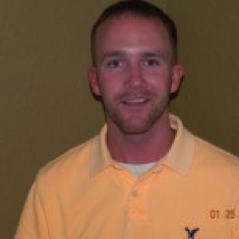
In October 2004 in Mahmoudiya, a city south of Baghdad, Donny was on a night foot patrol conducting vehicle searches. When a vehicle approached to be searched, the driver became irate and sped off. He engaged the squad of Marines with an AK-47 rifle and as Marines are taught, if you have no cover and concealment, make yourself a small target. As Cpl. Daughenbaugh was in the prone position flashes from the muzzle were aimed in his direction. One of those bullets hit Donny in the face, broke his jaw and severely damaged his nerves. His jaw was wired shut to heal the break and the bullet left in place, too close to vital nerves to be removed. Donny Was sent to Landstuhl Germany for weeks of stabilization and additional surgery until he was well enough to be sent home, to see his wife and daughter for the first time since his injury occurred.
He works with CSAH as the Regional Vice President East and as a national spokesperson. His involvement with the Coalition has not only helped Donny in his own recovery, but as an active representative of the organization, Cpl. Daughenbaugh has been able to inspire others through his story of resilience and the positive effects a family can have on one’s recovery. Donny lives in League City TX with his beautiful wife Sarah and their two children Gabby and Kollin
He works with CSAH as the Regional Vice President East and as a national spokesperson. His involvement with the Coalition has not only helped Donny in his own recovery, but as an active representative of the organization, Cpl. Daughenbaugh has been able to inspire others through his story of resilience and the positive effects a family can have on one’s recovery. Donny lives in League City TX with his beautiful wife Sarah and their two children Gabby and Kollin
Army - Jorge DeLeon (Coalition to Salute American Heroes)
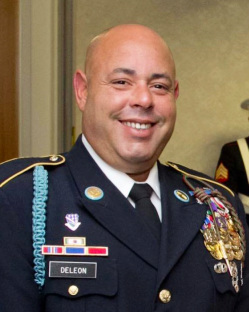
Jorge joined U.S. Army in 2001 after eight years on the police force in Puerto Rico. On his fourth deployment to Afghanistan in April 2004, Jorge and his unit were on their way back to camp after a patrol through the region. Jorge was driving a Humvee, the lead vehicle of the convoy when it ran over an anti-tank mine.
Having taken the full brunt of the mine, Jorge was the only one injured in the explosion. His lost his right leg immediately in the explosion and his left leg was severely injured. He underwent a long recovery at Walter Reed Army Medical Center and now wears a computer-controlled prosthetic leg.
Jorge briefly returned to law enforcement, working for the Department of Defense as a radio operator with the police department at Fort Sam Houston.
Today he is employed full time with CSAH as Director of the Family Support Network and CSAH Liaison to Brooke Army Medical Center. In addition, he serves as a the Assistant Vice President Midwest Region and National Spokesperson for CSAH to help to raise awareness for the organization and to inspire other wounded veterans to remain hopeful, even in times of extreme distress and isolation. Jorge’s story is one of perseverance that can be a model for those going through similar situations.
He resides in Texas with his wife and three young children.
Having taken the full brunt of the mine, Jorge was the only one injured in the explosion. His lost his right leg immediately in the explosion and his left leg was severely injured. He underwent a long recovery at Walter Reed Army Medical Center and now wears a computer-controlled prosthetic leg.
Jorge briefly returned to law enforcement, working for the Department of Defense as a radio operator with the police department at Fort Sam Houston.
Today he is employed full time with CSAH as Director of the Family Support Network and CSAH Liaison to Brooke Army Medical Center. In addition, he serves as a the Assistant Vice President Midwest Region and National Spokesperson for CSAH to help to raise awareness for the organization and to inspire other wounded veterans to remain hopeful, even in times of extreme distress and isolation. Jorge’s story is one of perseverance that can be a model for those going through similar situations.
He resides in Texas with his wife and three young children.
Army SFC, SF - Dillion Behr
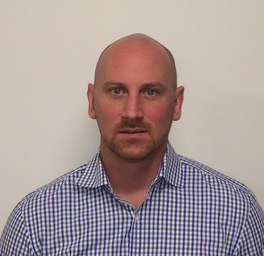
Dillon Behr from 3rd Special Forces Group 18E was very seriously injured on 6 April 2008 from multiple gunshot wounds in both the right bicep and right pelvis resulting in a destroyed femoral head and fractured acetabulum. Falling rocks from the explosions around him also caused him to suffer abdominal injuries that punctured his small bowel in several places.
After multiple surgeries he had his hip replaced five months later, continued with his daily physical and occupational therapy. While undergoing the medical evaluation board he started an internship with Operation War Fighter and the Defense Intelligence Agency. On 9 June 2010 he was medically retired and began school at Georgetown University.
Dillon graduated Georgetown with a Masters degree in Security Studies in May 2013 and has since been working full-time at a defense company called Logos Technologies near Washington DC.
He is currently engaged to Molly Just, whom he met while a patient at Walter Reed. Dillon also started and is the owner of CrossFit Walter Reed, which provides functional fitness training to wounded service-members and their families at Walter Reed
After multiple surgeries he had his hip replaced five months later, continued with his daily physical and occupational therapy. While undergoing the medical evaluation board he started an internship with Operation War Fighter and the Defense Intelligence Agency. On 9 June 2010 he was medically retired and began school at Georgetown University.
Dillon graduated Georgetown with a Masters degree in Security Studies in May 2013 and has since been working full-time at a defense company called Logos Technologies near Washington DC.
He is currently engaged to Molly Just, whom he met while a patient at Walter Reed. Dillon also started and is the owner of CrossFit Walter Reed, which provides functional fitness training to wounded service-members and their families at Walter Reed
USMC Cpl - Zach Briseno
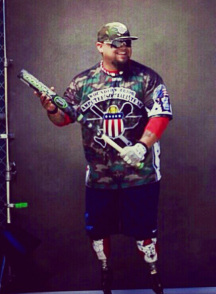
Zach was born in Fort Worth Texas. He joined the Marine Corps in 2003. Zach first deployment to Iraq was in 2005 and he returned home in 2006. His second deployed to Iraq was in 2007. He was Injured November 29 2007, Lost both legs below the knee.
ARMY PFC - Kyle Emmons
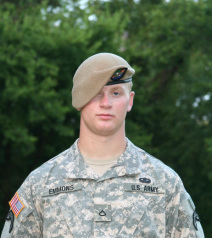
My name is Kyle Emmons, I’m 21 years old and am from the small town of Wagoner, OK. I played football and wrestled throughout my time in high school. I decided to join the army in the spring of 2011 and signed up shortly after.
I enlisted with an 11x option 40 contract. I shipped out to basic training January 3, 2012 at Ft Benning, GA. After completing OSUT, I then went into Airborne School and aftergraduating Airborne I went into RASP. After completing the 8 week RASP course I was assigned to B Company 3rd Ranger Battalion in October 2012. Shortly after arrival, I went on my first deployment to Afghanistan. After returning from Afghanistan, we took a short leave and then we hit the ground running, jumping right into a tough training cycle. It went by all too fast as the next deployment was here before I knew it and I was right back in Afghanistan.
Unfortunately, on October 6, 2013, while conducting night time operations against Taliban insurgents I was hit by an IED. The blast cost me part of my right leg and severely damaged my left leg.
I enlisted with an 11x option 40 contract. I shipped out to basic training January 3, 2012 at Ft Benning, GA. After completing OSUT, I then went into Airborne School and aftergraduating Airborne I went into RASP. After completing the 8 week RASP course I was assigned to B Company 3rd Ranger Battalion in October 2012. Shortly after arrival, I went on my first deployment to Afghanistan. After returning from Afghanistan, we took a short leave and then we hit the ground running, jumping right into a tough training cycle. It went by all too fast as the next deployment was here before I knew it and I was right back in Afghanistan.
Unfortunately, on October 6, 2013, while conducting night time operations against Taliban insurgents I was hit by an IED. The blast cost me part of my right leg and severely damaged my left leg.
How You Can Help
Invest in the healing and recovery of our service men and women by getting involved in our organization as a sponsor, donor, or volunteer. The time or money you donate will have a lasting positive effect on the lives of our disabled veterans. Help us lift their spirits and let them know that their sacrifices will not be forgotten.
